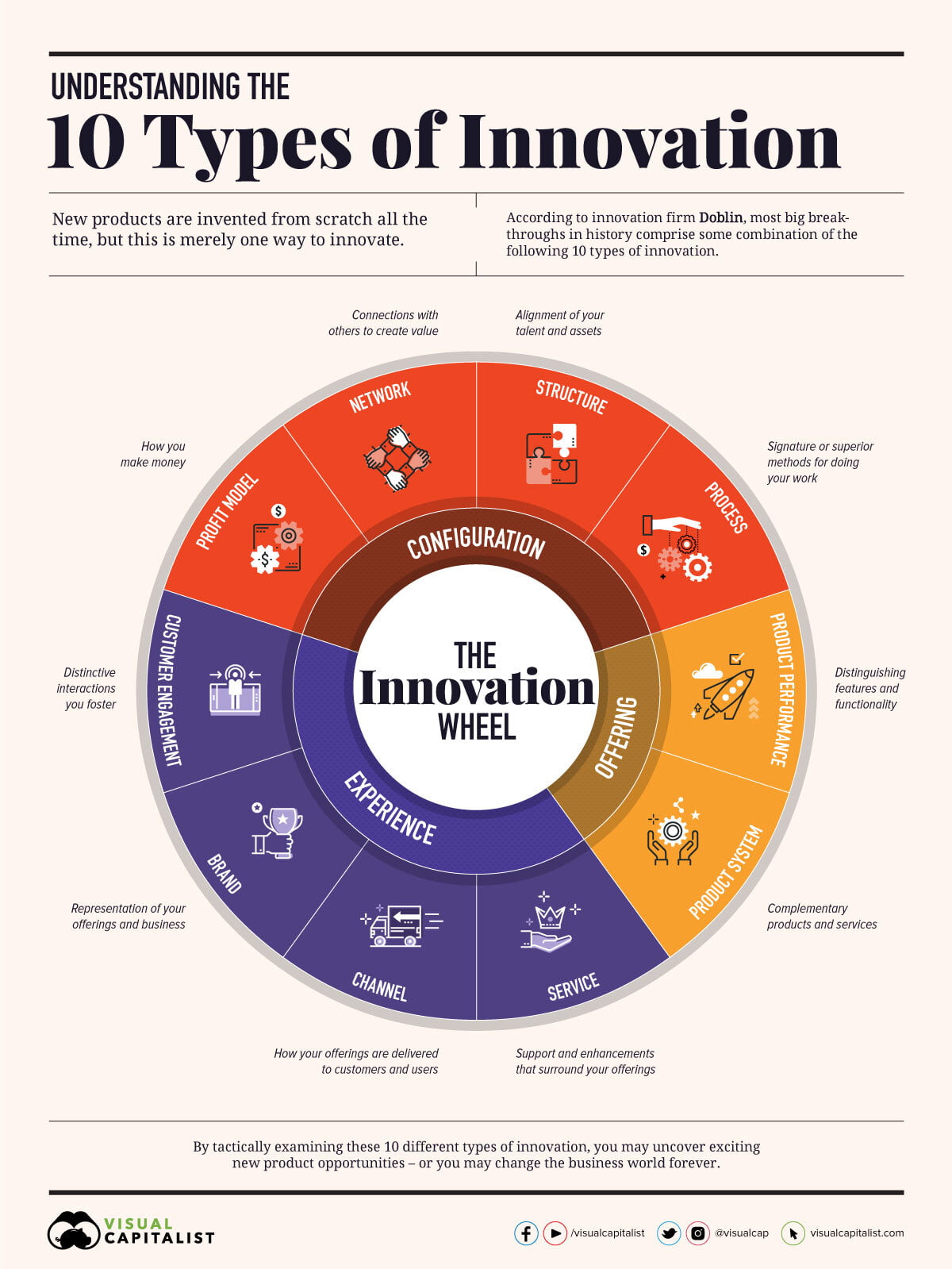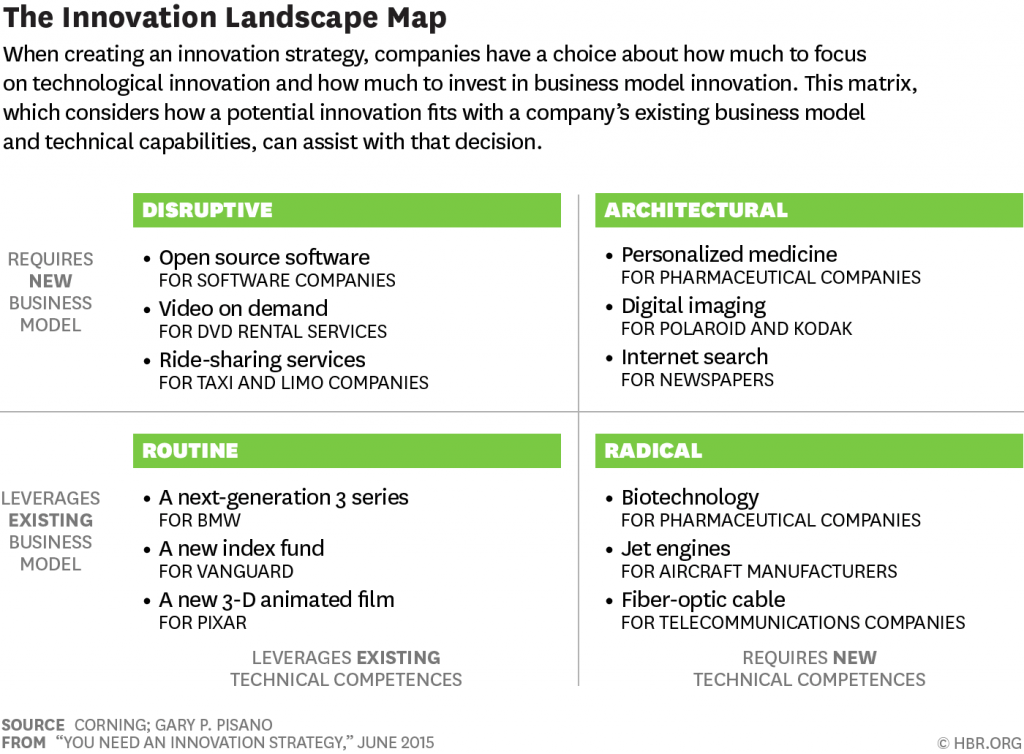Innovation is one of the most talked about topics in global business today. However, there are not many companies that have a clear idea of how to define innovation or the different types of innovation. This article looks at different ways of defining innovation and at how innovation can help an organisation and its employees to grow and succeed.
What is an innovative idea?
An innovative idea might meet a customer need, be technological feasible or be commercially viable, a combination of two of these factors, or ideally, all three, the so called innovation sweet spot.
Functional innovations are technologically feasible and commercially viable, such as new organisational structures. Process innovations are technologically feasible and attractive to the market, whereas emotional innovations meet commercial and customer goals with existing technology

Classifying innovation
When we talk about innovation, most people think of radical new products, but in reality, Innovations come in a variety of forms, and each will require different skills, look at different requirements and have different outcomes. According to Doblin, most companies focus their innovation efforts on product performance, but in terms of value creation, business model and demand side supply chain innovation create the vast majority of the value created by innovation.
So we need to think a bit more broadly about what out innovation focus can be directed towards.
Company culture can be a major driver for the focus of innovation. Companies like Apple who have built their reputation and value on new products are still likely to see technological advances as the key driver for future growth. Cultural attitudes can be split into three main areas.
Inward focus – Innovation based on what we provide
Companies can approach innovation from the perspective of the product set, seeking new technological solutions to existing problems. Classic examples of this are The walkman, the ipod, and generations of computers. In this context, the innovation looks to either incrementally improve an existing solution or create a new product approach which meets the same needs. The emphasis is, however centred on the existing product, rather than the existing need.
Process innovation is similar in that it seeks to find a better way to improve the specification of the product, mostly through improved speed or lower cost. The Production line, Just in time and on demand production are all examples which improve the efficiency of the business, and whilst the benefits might be passed on the customer, the increase in value is predominantly inward focussed.
Outward focused
In this case the innovation is centred on how to compete, and therefore looks at how the market, customer need or macroeconomy is changing. For example, the increase in regulation of emissions is driving the development of electric cars, rather than companies looking to improve their existing offering, the driver is external not internal.
The approach can be technological as in the approach above. This could be through the adoption of technologies external to the business into new offerings or by creation of new intellectual properties. In either case, the innovation is aimed at using new technologies to solve customer problems in new ways. Kindle would be an example, as this allowed Amazon a new way of providing written content to its customers.
Business model innovation can be more radical, and many of the disruptive innovators such as AirBnB, Uber and Netflix have take this approach, defining entirely different ways to meet customer needs.
In both of these approaches, the driver is external rather than internal. It looks at how to meet the needs of the market, rather than how to improve the existing offerings and approaches.
Social innovation
Innovation is not solely the preserve of businesses. SOcial innovation is the development of new approaches to solve social issues, rather than commercial issues. The Civil rights movement in the US grew out of a need to change the social construct and discrimination faced by the black community.
Fairtrade, food waste reduction and most green projects are examples of social innovation. The main difference is that society as a whole benefits, but this means that much greater change is required, and there is no clear endpoint, hence social innovation is an example of Open innovation
What can be innovated.
Doblin has classified 10 different types of innovation that are open to a business.
Originally these were grouped into 4 categories ( Model, Process, Offering, Delivery), but this has been cut to three:
- The experience of the customer
- Service offering – how the product is supported
- Channels to market – how the product is sold and distributed.
- Brand – how the offering is presented and perceived.
- Customer engagement – how the company and it’s products interact with the customer
- The offering ( both product and service)
- Product performance – the features, benefits and functionality that differentiate the value proposition
- Product system – the range of products and services and how they are integrated as a whole. Apples Ipad and itunes for example
- The configuration of the business
- The profit model – the basics of how the company monetises its offering profitably.
- Network – the supply chain and how it is integrated
- Structure – the resources and capabilities that make up the core competences of the business
- Process – how the company is organised to produce the product or service.
The Innovation landscape
Not all innovations are created equal. We don’t have to radically reinvent the industry with every innovation, so what approach is relevant to your business and how far should the innovation go?
The innovation landscape, was created by Corning and Pisano and describes the degree to which innovation changes the product, business or industry based on access to the relevant technology and suitability of the existing business case.
Similar to the Ansoff Matrix, this offers broad descriptions of the potential strategies that can exist for a company, rather than specific tactics, but it gives a good starting point. It can also highlight some of the barriers, and it should be assumed that, as you move further from the routine, the risks of failure increase,
Routine Innovation
Routine innovation is the easiest as it involves incremental improvements based on the existing business model and leveraging existing technologies. Product and process innovations frequently fall into this category, where a company seeks to improve the speed of a computer or the acceleration of an existing car engine.
Radical Innovation
In this situation, the company brings new technological skills to the party but doesn’t fundamentally change the way that it does business. The profit model, channels to market and branding don’t really change, the customer is just faced with a different technological solution, sold in the same way. The move from CRT to plasma to LCD TV’s would be an example. The customer experience is still the same, we still buy from the same store, but the Manufacturer needed to develop new technologies and skills to deliver the product.

Disruptive innovation
In this case the technology remains the same, but the way that it is experienced and paid for will be different. Netflix, AirBnB and uber are examples of this as they provided completely different ways to experience existing product. Uber hasn’t invented a new Car, AirBnB hasn’t built new hotels, all they have done is come up with a new way for us to pay for the required service, moving, in these example from ownership to a service based payment model.
Architectural Innovation
Architectural innovations are rare. They require companies to both invent new technologies and create completely new ways of monetising these products. Often this is driven by crisis, when existing solutions are no longer viable.
Conclusion
Innovation is a word that is thrown around a lot, especially by companies. However, it is often misunderstood. Innovation is simply a change to the status quo, which can be a product, a process, or even a business model. To be successful, innovation must be relevant and useful. We hope that this article has given you a better perspective on what innovation is, and how it can be applied to your company.




